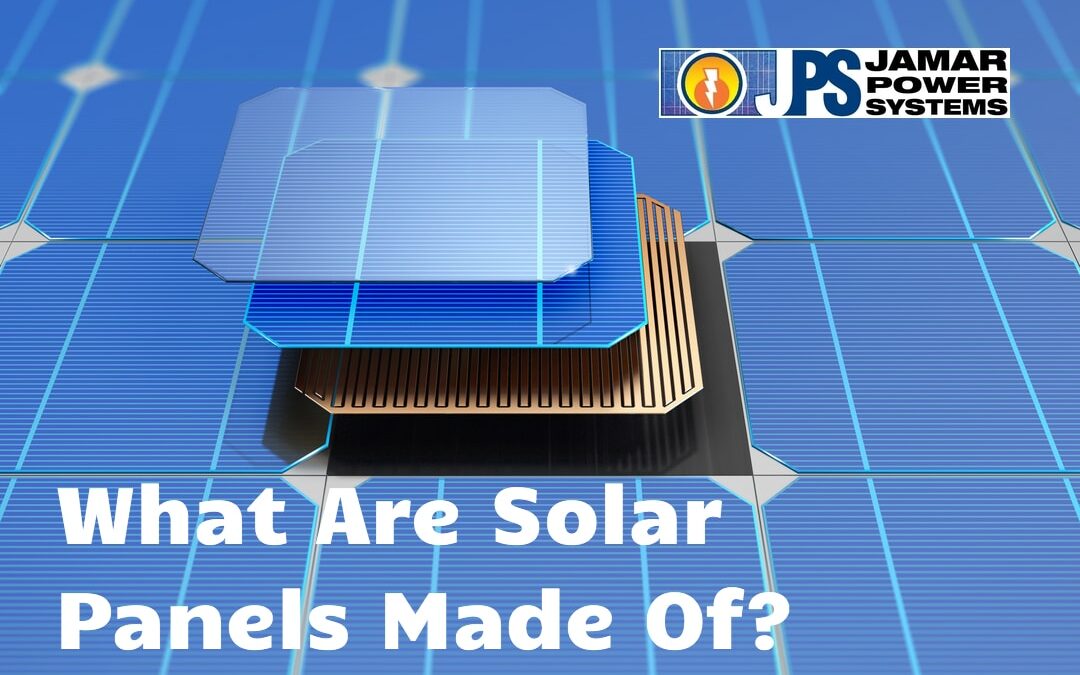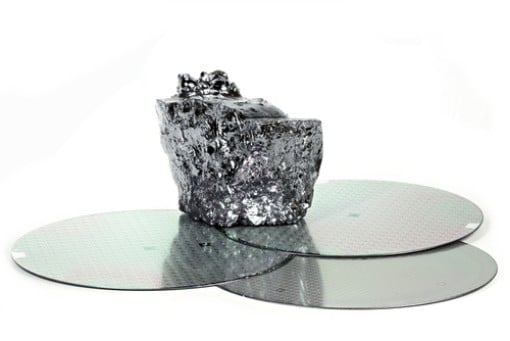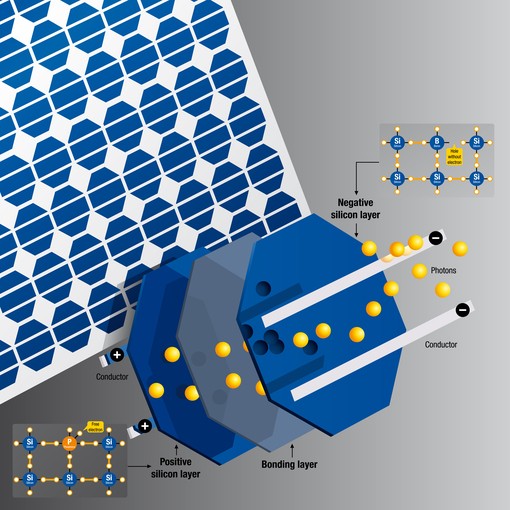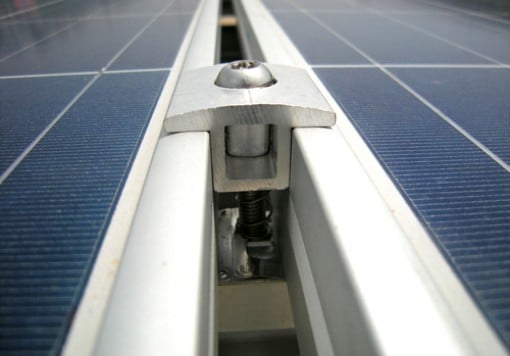What are Solar Panels Made Of?
You’ve probably heard of the many benefits of solar power, such as reducing greenhouse gas emissions, cost-effectiveness, and increasing your home’s value, among others.
For these reasons, the popularity of solar electricity for both commercial and residential use has soared in recent years.
So, if you’re looking to join the bandwagon, it’s good to understand how solar panels work. But first, what are solar panels made of?
The basic principle behind all solar panels is converting light from the sun into electricity.
The large solar panels you see on businesses or homes are made up of several solar or photovoltaic cells made of silicon semiconductors.
These cells are then connected to form a solar panel that absorbs the light from the sun to create an electrical current.
What materials are solar panels made from?
When looking at a solar panel, it may simply appear as one comprehensive block.
However, solar panels are made of various materials and chemical components, which are vital for efficiently converting sunlight into usable electricity.
Silicon Semiconductors
Most solar cells are made from silicon wafers, made from specially mined sand that gets heated to super-high temperatures and purified to create cylinders of pure silicon.
Thin silicon wafers are then sliced from the cylinder to make solar cells.
Silicon is an important element and available in abundance on Earth, making it environmentally friendly.
Silicon makes up about 30% of the Earth’s crust. In fact, it’s the second most available material or element on our planet, second to oxygen.
Here’s a video about silicon and why it’s called the smartest element on Earth.
In addition, silicon is resistant to any significant degradation over decades, making it the perfect option for industrial power generation.
Two types of silicon are made, p-type and n-type, by adding additional atoms during the manufacturing process, such as boron or gallium for p-type and phosphorous for n-type.
These two layers are connected into the same solar cell by a metallic bus wire, allowing electrons to travel back and forth, creating electricity flow.
However, other in-developmental and experimentation materials besides silicon are also available in the market.
Solar panels made from silicon provide a combination of long life, high efficiency, and low cost.
Most solar modules are designed to last for over 25 years while still producing over 80% of their original power.
Solar PV cells won’t, however, power your home without the rest of the operational parts such as plastic, glass, wiring, and metal.
Tempered Glass
Usually, solar panels are covered by a layer of tempered glass with an anti-reflective coating to secure the sensitive solar cells while still allowing light to pass through.
Metal Frame
The entire arrangement is supported by a frame for handling, shipping, mounting, grounding, and the installation of the solar panels.
Solar panels frames can be made from various materials, most commonly with anodized aluminum with a clear or powder coating for corrosion resistance.
Just like any cutting-edge and advancing technology, especially in the energy sector, solar panels come in many variations of designs, sub-components, and styles.
The most common solar panel types include monocrystalline, polycrystalline, and thin-film solar panels.
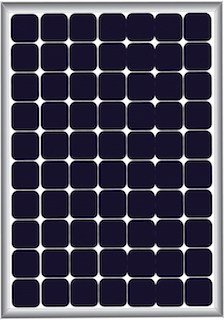
Monocrystalline solar panels
These are made from a single large silicon block and are made in silicon wafer formats.
The process involves cutting the individual silicon wafers that are then affixed onto a solar panel.
The manufacturing process is technology and labor-intensive, making them the most expensive solar panels.
However, they’re the most effective and efficient solar panels, and their distinct black appearance is linked to the sleek look of our premium solar panels.
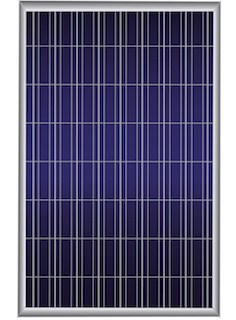
Polycrystalline solar panels
Polycrystalline solar panels are made by melting multiple silicon crystals together.
Multiple silicon crystals are melted together, formed into shape, and then re-used in the solar panel itself.
Polycrystalline solar panels are less efficient than monocrystalline cells but are a more budget-friendly solar option.
Because they are less efficient, you may need more Polycrystalline panels than you would with Monocrystalline panels.
If roof space is a major factor, the latter may be the better option to meet your electricity needs.
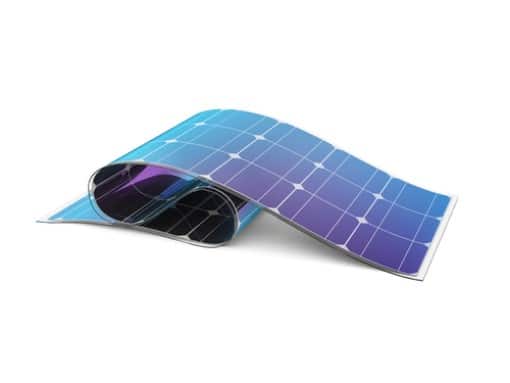
Thin-film solar panels
The thin-film solar panels are made from amorphous silicon, making them the most flexible solar panels.
They’re non-crystalline and are instead attached to a substrate such as plastic, glass, or metal.
As a result, just as the name suggests, thin-film solar panels are thin, bendable, and lean.
Although they’re ideal for use due to their versatility, thin-film solar panels are the least efficient.
Thin-film solar panels are mostly used for industrial and utility needs and not residential or commercial use.

Where do solar panel materials come from?
Determining where solar panels are made is not as easy as it sounds.
In fact, of the top 10 solar panel manufacturers globally, seven are in China, while one is in the United States.
The two remaining manufacturers are from South Korea and Canada.
However, the manufacturer’s country is only part of finding out where solar panels come from.
Most manufacturers only assemble the final product.
A single solar cell is made of multiple parts made and outsourced from companies worldwide using raw materials from regions around the world.
To find out where solar panels are made requires one to trace the solar chain from the raw materials to the final product.
From top to bottom, a complete solar panel is comprised of:
- Frame
- A glass cover
- An encapsulant for weather protection
- Photovoltaic (PV) cells
- Backsheet for protection
- Junction box connecting the panel to the electric circuit
All these parts are manufactured from smaller parts made from raw materials from many parts of the world.
The United States imports approximately 86% of new solar PV modules from Asia, particularly Vietnam, Malaysia, South Korea, and Thailand.
The solar parts are made of silicon wafers, the thin semiconductors in all solar panels and other electronics.
China accounts for 60% of all wafer manufacturing, with 25% from Longi Green Energy Technology CO., the biggest solar company globally.
The silicon wafers themselves are often made from solar-grade polysilicon during production. Approximately half (45%) of the polysilicon is manufactured in Western China.
In 2021 the United States banned polysilicon imports from this region after accusing China of forcing Uyghur labor camps to manufacture it (article).
Another key part of a solar module is the aluminum frame. The main aluminum source comes from recycled products, with most producers coming from China.
The same applies to backsheet, encapsulants, and glass materials, where China takes the lead, followed by Germany.
As for silicon, pure silicon is quite reactive in nature. However, it is found in all rocks and clays, soils, and sands, combined either with oxygen as silica or with oxygen and other elements such as calcium, potassium, sodium, iron, and magnesium as silicates.
Therefore, silicon is not a determining factor and can be found in abundance.
Summary
The basic principle behind all solar panels is converting the light from the sun into electricity.
The large black panels you see on businesses or homes are made up of several photovoltaic cells made of silicon semiconductors.
These cells are then connected to form a solar panel that absorbs the light from the sun to produce an electric current.
Solar panels are made of various materials and chemical components, each vital for the efficient and effective conversion of sunlight into usable electricity.
Most of the solar panels are made from silicon wafers.
The most common solar panel types include monocrystalline, polycrystalline, and thin-film solar panels.
We hope this guide has helped answer your question: “What are solar panels made of?“
To learn more about solar energy, see our articles on “How much do solar panels cost?” and our in-depth Buyer’s Guide to Solar Power Systems.
- 2025 Federal Tax Credit Changes For Solar Panel Systems & Solar Batteries - July 8, 2025
- How Solar Batteries Work - March 4, 2024
- Solar Battery or Generator for Emergency Backup Power? - January 30, 2024

